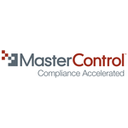The compliance audit: the essential tool for assessing your company's compliance with regulatory obligations
A compliance audit enables a company to carry out an objective and precise assessment of its regulatory obligations in a particular field or service (data protection, financial situation, working conditions, etc.).
It is used to identify minor or major discrepancies with a view to making corrections and ensuring compliance. Various types of audit (external, RGPD, pre-certification, etc.) are available.
👉 Find out how this assessment tool is organised (data collection, analysis, areas for improvement, etc.) and what its objectives are.
What exactly is a compliance audit?
Compliance audit: definition
A compliance audit is a control and assessment tool that enables a company or institution to determine the level of compliance of an existing system with a legal, regulatory or standard reference framework.
The existing system may be :
- its business sector in general or one of its departments (human resources, payroll, etc.);
- protection of personal data
- working conditions
- the environment ;
- its territory, etc.
Why carry out a compliance audit: objectives and benefits
A compliance audit provides an opportunity to take stock of the situation and identify areas for improvement. Its aim is to verify and measure an organisation's compliance, with the following objectives:
- to identify risks and find practical solutions;
- manage activities more effectively
- modify practices where necessary;
- protect against sanctions linked to non-compliance...
Compliance audit vs. efficiency audit: are they the same thing?
Not quite. These two types of audit have different objectives, even though they are often based on the same information.
A compliance audit verifies whether the company complies with the regulations in force. It assesses the level of compliance with internal or external standards, laws and policies. In other words, are the rules being followed to the letter?
The efficiency audit goes further. It analyses whether the processes in place are really delivering the expected results. We're no longer content to say "it's done", but rather "it's well done".
💡 Let's take an example. An organisation may be perfectly compliant with personal data protection rules (RGPD), but have a slow and inefficient process for responding to user requests. The first point passes the compliance audit, the second fails the efficiency audit.
Ideally, the results should be combined to reinforce both compliance with regulatory obligations and internal performance.
What types of compliance audit are there?
There are several types of audit designed to assess an establishment's compliance with regulations or standards.
External audit
This is carried out by a person from outside the company and can cover a wide range of areas:
- financial statements
- work organisation
- workplace safety, etc.
It helps to identify any malfunctions or understand an existing incident and to implement improvements.
💡An external audit can also be used to check the compliance of a supplier's system with the requirements of a standard or the company's own rules.
Pre-certification audit
Also known as a "blank audit" or "pre-audit", this enables a company to carry out a test before the actual certification or labelling stage , whatever the latter may be:
- ISO 9001
- ISO 14001, ETC,
- Qualiopi,
- IFS, etc.
💡The pre-certification audit is also suitable for preparing and reassuring the players and staff involved before the certification process; but also for working on identified weak points.
RGPD compliance audit
The European General Data Protection Regulation (GDPR) requires companies and organisations in all sectors to manage and protect personal data more effectively.
The purpose of the RGPD compliance audit is to find out whether the European directive is being applied, and to what extent. In particular, it takes into account the following points
- the technical operation of the information system and, more specifically, the processing of personal data ;
- the documentation in place (IT charter, processing register, consent form, etc.);
- the security and reliability of the current information system.
💡By ensuring RGPD compliance, companies ward off the risk of sanctions and can optimise the security of their information system.
How to conduct an effective compliance audit: 4 key steps
1 - Carry out a documentary study and an inventory of the activities concerned
These two steps make it possible to identify the standards and benchmarks applicable in the chosen areas.
2 - Choose the type of information to be gathered during the audit
The audit can be carried out in several ways and using different tools:
- On-site observations ;
- Interviews with the people involved
- Examination of documents, etc.
These are the most common techniques used to gather information for an audit. All the elements gathered are then examined and compared with standards and regulations to identify any discrepancies.
💡These non-conformities are generally classified. We find :
- Minor non-conformities, which have no real impact on the company's activity or safety;
- Major non-conformities, which may have repercussions on the way the organisation operates.
3 - Calling in a service provider or using appropriate software
There are a number of professionals (internal or external to the organisation) who can help you set up and carry out a compliance audit:
- independent experts
- specialist firms
- consulting firms, etc.
However, to benefit from an effective, relevant and proactive review, you need to turn to a service provider with the essential knowledge and experience. An IT security expert can help you with an RGPD compliance audit, an accountant with an accounting compliance audit, and so on.
You can also rely on specific software that provides a regulatory watch. This tool allows you to :
- carry out regulatory searches by theme (fire, cybersecurity, health and safety in the workplace, etc.) ;
- access all the regulations (decrees, contracts, etc.) you need to comply with;
- keep track of legislation (so you can keep up to date with new developments);
- manage your compliance strategy;
- implement a compliance action plan.
4 - Reporting on compliance status
The audit report presents the strengths, opportunities for improvement and non-conformities identified. The recommendations are essential, as they enable corrections to be made and compliance with regulations or standards to be achieved.
Example of a compliance audit report to structure your own
Need a little help writing your audit report? Here's a sample report that can be adapted to suit your company, your activities and the type of audit you're carrying out. Fill in the missing fields with your own data.
1. General information
Name of the organisation audited: [....................................................]
Audit date: [....................................................]
Type of audit: [Internal audit / External audit / RGPD compliance audit / Other]
Person in charge of the audit: [....................................................]
Auditor(s): [....................................................]
2. Objectives and scope
Main objective: [Assess compliance with regulations, identify non-compliance, etc.].
Scope of the audit: [Departments concerned, processes analysed, type of activities covered, etc.].
3. Methodology
Gathering of information: [Documentary study, interviews, questionnaires, field observations, etc.]
Compliance criteria used: [ISO standards, RGPD regulations, internal policies, etc.].
4. Findings
Points of compliance :
- [Example: The processing of personal data is documented and up to date]
- [Example: Internal forms comply with legal requirements]
Non-compliances identified :
- [Example: No data processing register]
- [Example: No procedure for managing security breaches ]
5. Recommendations
Corrective measures proposed:
- [Example: Set up a RGPD register within 30 days]
- [Example: Train teams in personal data processing]
6. Conclusion
Overall level of compliance: [Compliant / Partially compliant / Not compliant]
Auditor's comments: [....................................................]
Signature: [....................................................]
Top 5 compliance management tools
When it comes to compliance audits, the right tools make all the difference. All-in-one platforms, specialised RGPD solutions or internal control software: here are our top 5 to keep your business in line (and sleep easy 💤).
Auditool
🛠 Auditool, a comprehensive platform that helps you continuously improve your products and processes. With Auditool, companies can manage their QHSE, cyber, internal control audits, and much more! Auditors share their work, annotate repositories and automatically generate relevant deliverables to help you. Monitor compliance statistics and the progress of corrective actions in real time, while providing reports tailored to each company stakeholder.

Auditool
MasterControl
🛠 MasterControl is a world leader in compliance management for highly regulated sectors such as healthcare, pharmaceuticals and aerospace. The software centralises your data, automates your audit reports and tracks your ISO or FDA compliance status in real time. Its integrated workflow engine prevents errors and saves you precious time in your quality processes. Bonus: everything is traceable and secure, from the internal audit to the final report.

MasterControl
Netwrix Auditor
🛠 Netwrix Auditor is the benchmark for monitoring your sensitive data and ensuring compliance with regulations such as the RGPD or the Sarbanes-Oxley Act. The software detects deviations, tracks all changes, and alerts you to any suspicious behaviour. Ideal for strengthening the security of your IS and proving that your company is in compliance.

Netwrix Auditor
VComply
🛠 Say goodbye to those pesky Excel spreadsheets with VComply! This cloud software lets you manage your regulatory compliance and risks via a clear, intuitive interface. You create your criteria, assign tasks, track corrective actions and generate reports at the click of a button. Simple, visual and collaborative, VComply is suitable for all types of organisation, from SMEs to large groups.
Witik
🛠 Witik, a 100% made-in-France compliance solution that helps SMEs, ETIs and large groups to manage their various compliance programmes (RGPD, the Sapin II law and ISO). Thanks to its third-party assessment module, you can easily deploy compliance audits of your subcontractors to protect yourself against any CNIL sanctions, while reinforcing transparency in your customer-supplier relationship. What's more, Witik provides you with personalised, secure support throughout your compliance process, including automated registers, a collaborative module, a powerful alert system, and much more!
The compliance audit in brief
A compliance audit is a reliable and effective way for a company to find out where it stands in relation to current legislation and standards.
It is based on an assessment of the situation at a given point in time, and provides detailed suggestions for improvement. You can call on specialists to carry it out, or rely on appropriate software.
Article translated from French